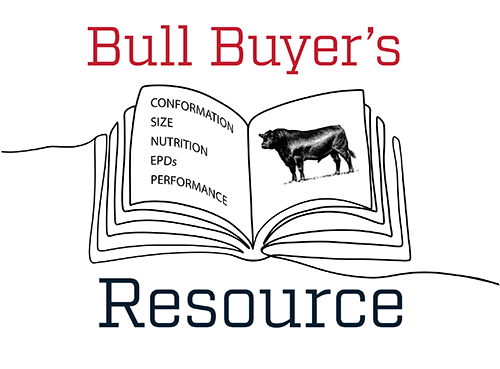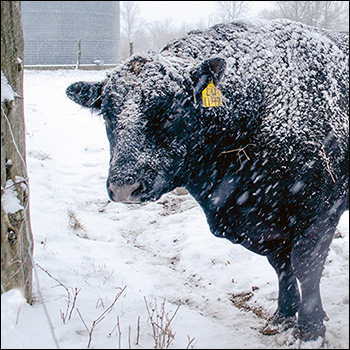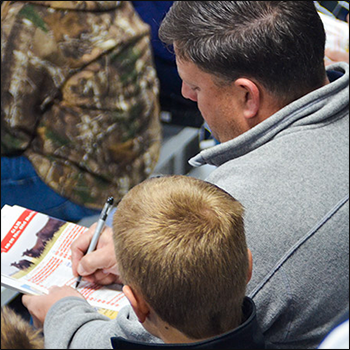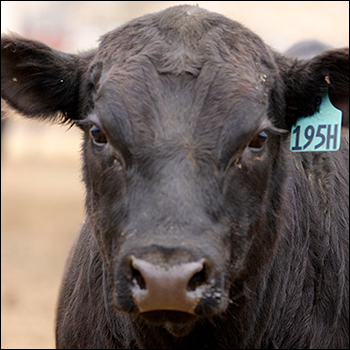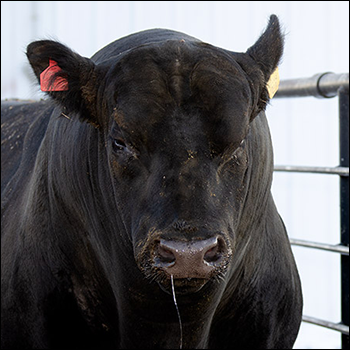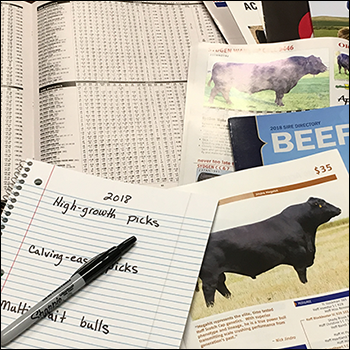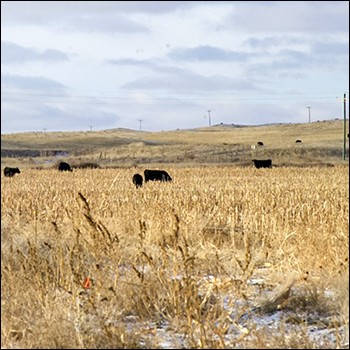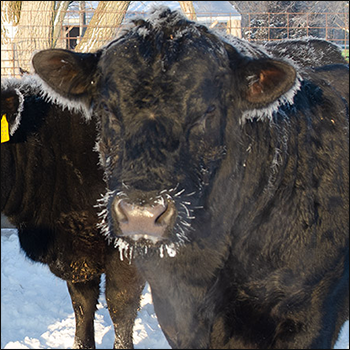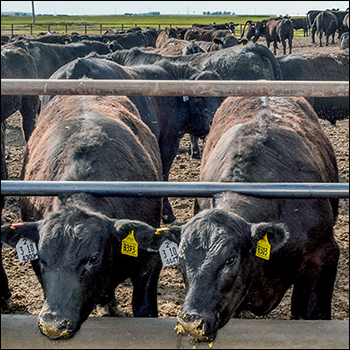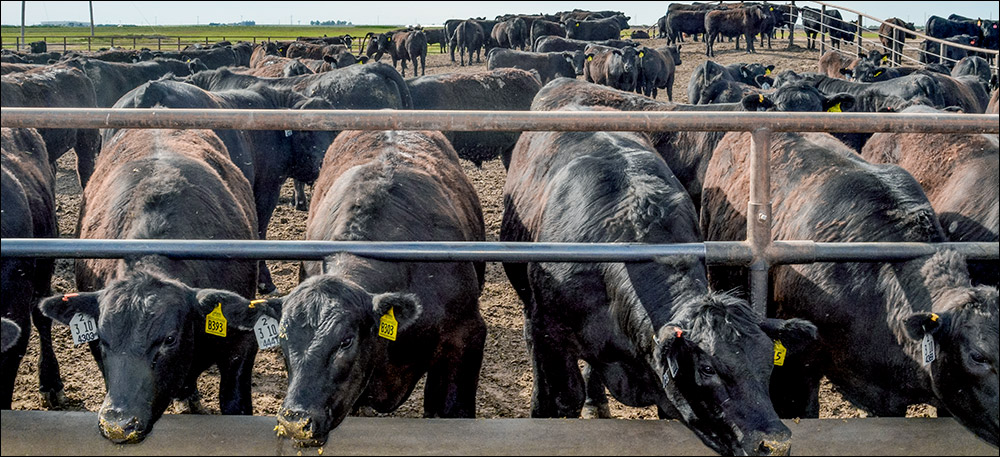
Lessons on Value
Commercial and seedstock producers learned ways to earn more for their cattle.
Commercial and seedstock producers filled the stands to learn how to capture more value for their calves during the 2021 National Angus Convention and Trade Show in Fort Worth, Texas. Troy Marshall, American Angus Association director of commercial industry relations, moderated the “Capturing Value” panel added to the program this year. Panelists Clint Berry, Superior Livestock Auction representative; Kelli Payne, Oklahoma City National Stockyards president; Doug Slattery, 44 Farms chief operating officer; and Bruce Cobb, Certified Angus Beef (CAB) executive vice president of production shared their perspectives and recommendations to capture more value for feeder calves and purebred cattle.
Discussion started with a 30,00-foot view of the cattle market as Berry described the current demand drivers in the market. Berry said the industry sits at an all-time high for beef demand thanks to programs like CAB, which aim to differentiate quality.
“I’ve probably never been as optimistic about the beef business as a fifth-generation farmer who has worked my entire career in the beef industry,” Berry said.
Even with processing challenges, high demand for beef puts producers in a good position, Berry said. Consumers recognize the eating quality of beef and are paying for it. Looking into the future, he said, this demand will create a need for producers to differentiate. Implementing DNA technology into sorting and managing cattle will help get more upper two-thirds Choice and Prime product for consumers.
As technology helps differentiate the quality of feeder cattle, Marshall asked, can the marketplace have too much quality product?
“If you look just 15 years ago, grid premium was near $2 to $3, and it continues to escalate because we’re doing what consumers want,” Cobb said. “We’re delivering to them what they want to share with their families. We’re delivering to restaurants what chefs expect to deliver to their customers. Retailers continue to grow in their demand level. And again, it goes back to producers selecting the right cattle, cattle being managed appropriately and then being fed correctly across the country.”
Slattery emphasized the importance of genetics seedstock producers provide to their customers. Slattery says all producers need to be willing to take steps that will help garner more value. They must start with a health program, a great nutritional program and they need to have a seedstock producer who will help with their genetics.
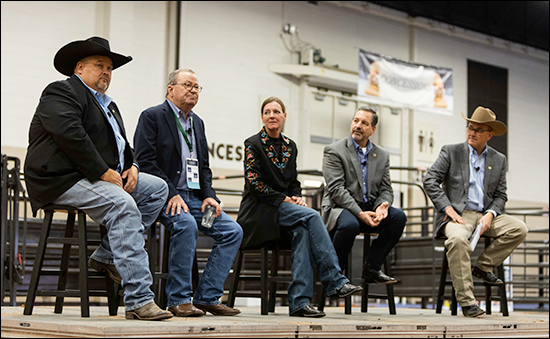 During the panel discussion, Doug Slattery emphasized the importance of genetics seedstock producers provide to their customers. Slattery says all producers need to be willing to take steps that will help garner more value. They must start with a health program, a great nutritional program and they need to have a seedstock producer who will help with their genetics.[Photo courtesy the American Angus Association] |
Receiving carcass data back at the commercial-cattlemen level can be helpful, Slattery said. “We talked to all the producers when they were making bull selections to try and help them with what they need. We are working all these angles with producers to help get them more profitable.”
Payne agreed, “The ones that are doing it right are going to be the ones who are rewarded.”
Regardless of herd size, Payne emphasized that as challenges occur, producers must adapt if they want to differentiate their cattle on sale day. Oklahoma City National Stockyard has seen that contrast during the special AngusLinkSM sale days.
Buyers never forget bad cattle, and they will remember the best, she said. “You will remember the cattle you buy, put in the feedlot and just grow and grow. In other words, you remember when you lost money and when you made money.”
Focusing on demand drivers, differentiating quality, taking the extra steps and adapting with the times were all big takeaways from the four panelists during the Capturing Value panel at the 2021 Angus Convention. Visit www.anguslink.com to learn more.
Editor’s note: Whitney Whitaker is a communications specialist for the American Angus Association. Lead photo by Kasey Brown.

Angus Proud
In this Angus Proud series, Editorial Intern Jessica Wesson provides insights into how producers across the country use Angus genetics in their respective environments.
 Angus Proud: Bubba Crosby
Angus Proud: Bubba Crosby
Fall-calving Georgia herd uses quality and co-ops to market calves.
 Angus Proud: Jim Moore
Angus Proud: Jim Moore
Arkansas operation retains ownership through feeding and values carcass data.
 Angus Proud: Les Shaw
Angus Proud: Les Shaw
South Dakota operation manages winter with preparation and bull selection.
 Angus Proud: Jeremy Stevens
Angus Proud: Jeremy Stevens
Nebraska operation is self-sufficient for feedstuffs despite sandy soil.
